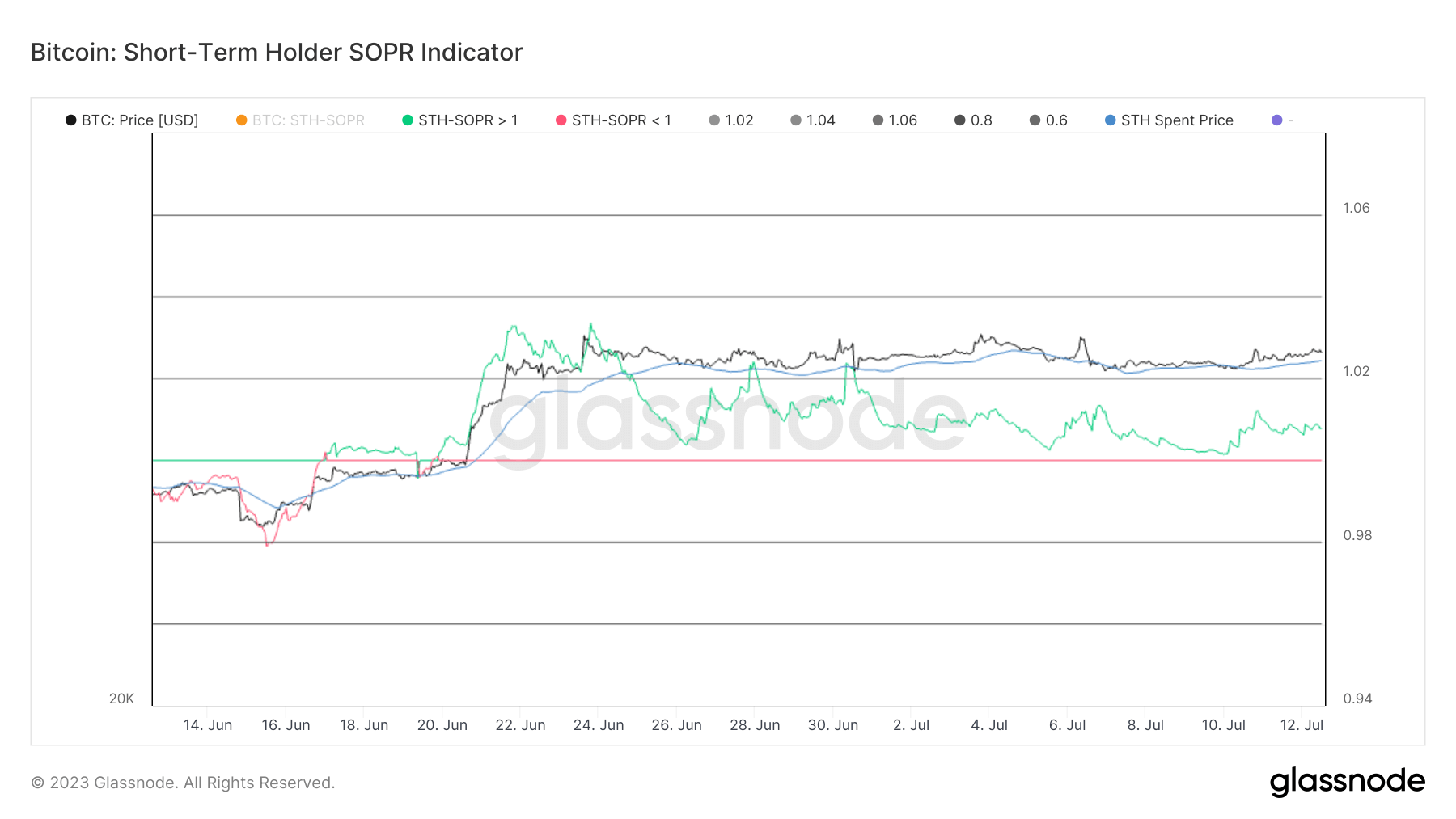Bitcoin’s sustained worth stage above $30,000 has induced a noticeable shift in market conduct, particularly amongst short-term holders.
Quick-term holders (STH), or those that have held Bitcoin for lower than 155 days, play an important position in market evaluation. Their conduct usually supplies perception into market sentiment and potential worth actions.
Usually, they’re extra reactive to cost modifications and have a tendency to purchase or promote primarily based on latest market tendencies. This may result in elevated volatility as their buying and selling actions could cause giant worth swings.
For instance, when short-term holders begin to go to sleep, it might scale back strain from the promote facet out there, which may result in a extra steady worth atmosphere.
Bitcoin’s latest worth surge from $26,000 to over $30,000 has put the vast majority of STH in revenue. That is evident by way of the measure of revenue ratio of output spent by the short-term holder (STH-SOPR). SOPR is a metric that calculates the revenue ratio of cash moved on-chain, offering info on whether or not holders are promoting at a revenue or a loss. STH-SOPR explicitly focuses on short-term carriers.
Since June 20, STH-SOPR has been trending above 1, indicating that short-term holders are, on common, transferring their cash profitably. The metric peaked at 1.033 on June 21 and has since trended decrease, reaching 1.006 on July 11. This implies that whereas STHs are nonetheless profiting, the revenue margin has shrunk.

In the meantime, information from on-chain market analytics platform Glassnode exhibits that the promote danger ratio for short-term holders has declined. The promote danger ratio quantifies the general promote danger out there by evaluating the whole USD worth that traders spend every day to the whole market capitalization realized by the holder within the brief time period. Excessive values are usually related to robust revenue taking, whereas low values correspond to phases of market consolidation and bear markets.
The ratio started to rise on June 21, peaking on July 5. Since then, the ratio has fallen sharply, indicating much less promoting strain from short-term holders.

The mixture of those two measures paints an attention-grabbing image. Because the revenue margin of short-term holders decreases, the strain from the promote facet additionally decreases. This might recommend that short-term holders are opting to carry on to their Bitcoin, regardless of declining earnings.
This conduct may doubtlessly stabilize the market and create a stable basis for future worth will increase.
The submit Why are short-term holders HODLing as a substitute of taking earnings? appeared first on forexcryptozone.
